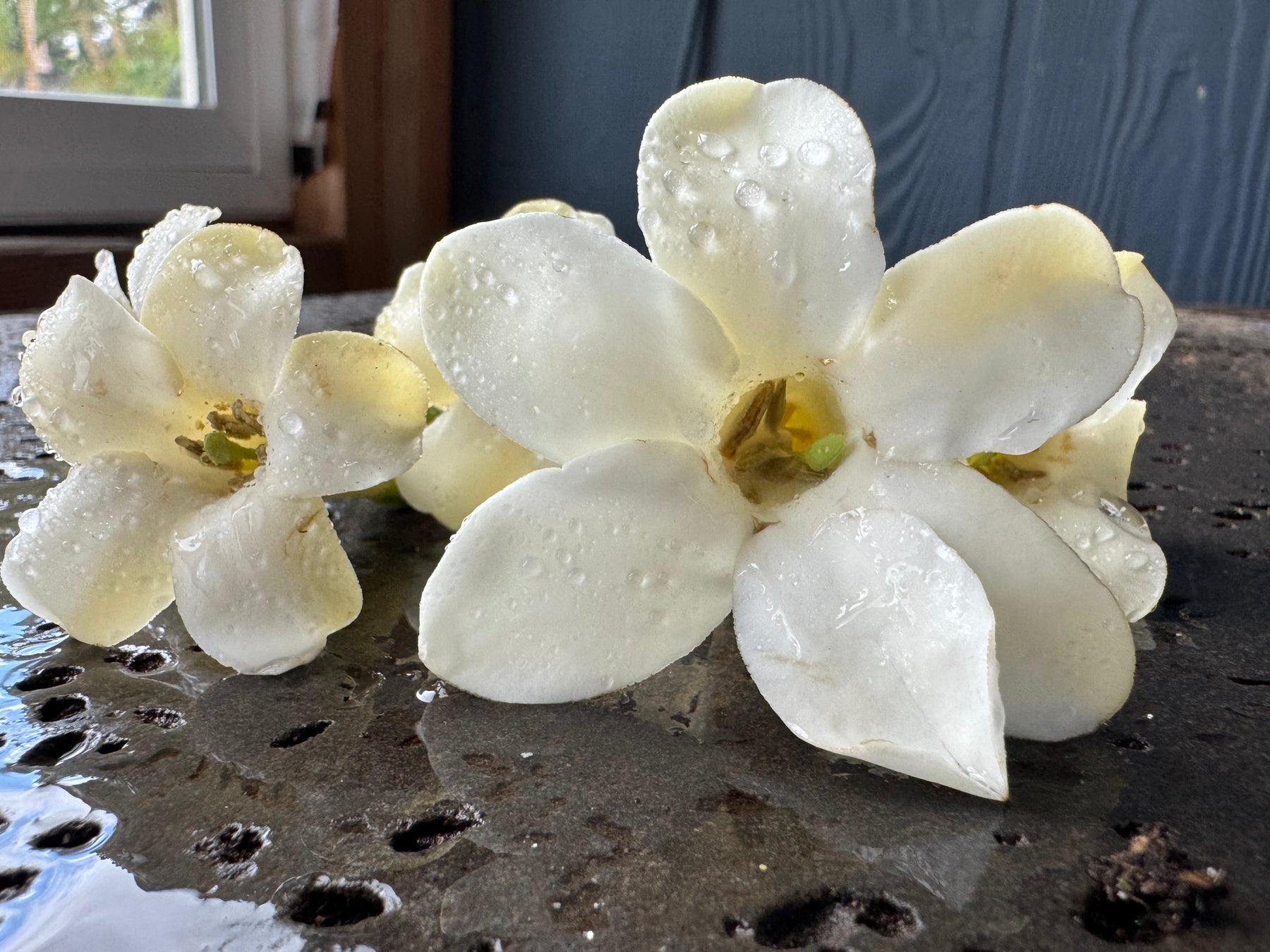
'Ulu & Puakenikeni Tree Care
‘Ulu tree care
(also known as breadfruit, Artocarpus altilis) involves providing the right tropical conditions and regular maintenance to ensure it thrives and produces fruit. Here's a care guide for your ulu tree:
Basic Requirements
-
Climate: Tropical to subtropical. Ulu trees prefer warm, humid climates and are not frost-tolerant.
Sunlight: Full sun—at least 6–8 hours of direct sunlight daily.
Soil: Well-drained, loamy soil enriched with organic matter. pH: 6.0–7.4.
Spacing: Plant at least 30–40 feet away from structures or other large trees; ulu trees can grow quite large (up to 60–85 feet tall).
Watering
-
Young trees: Keep soil moist but not soggy. Water deeply 2–3 times per week depending on rainfall.
Established trees: More drought-tolerant, but still benefit from regular watering in dry periods.
Avoid waterlogging—ulu trees are susceptible to root rot.
Fertilizing
-
Young trees: Apply a balanced fertilizer (e.g., 10-10-10 NPK) every 2–3 months.
Mature trees: Feed less often; a slow-release organic fertilizer 2–3 times per year works well.
Supplement with compost or mulch to retain moisture and improve soil health.
Pruning
-
Prune to shape when young.
For mature trees, remove dead or crossing branches and keep the canopy open for airflow.
Can be pruned to maintain a manageable height and to make fruit easier to harvest.
Fruit Production
-
Ulu trees start producing fruit 3–5 years after planting (if grown from a root sucker or cutting; longer if from seed).
Fruits ripen in late summer to early fall in most tropical areas.
Harvest when the skin is greenish-yellow and slightly soft when pressed.
Pest & Disease Control
-
Watch for aphids, mealybugs, scale insects, and fruit flies.
Diseases like anthracnose or root rot can occur in poorly drained soil.
Use organic sprays like neem oil for pests, and maintain good airflow and hygiene to prevent diseases.
Bonus Tips
-
Mulch around the base to retain moisture and suppress weeds (but keep away from the trunk).
Companion planting with nitrogen-fixing plants like pigeon pea can help enrich the soil.
Avoid heavy tilling around the root zone—it damages the shallow root system.
Puakenikeni Care
(Fagraea berteroana) is a fragrant flowering tree native to Hawaii, known for its small, fragrant, yellow to white blossoms. Here’s how to care for a Puakenikeni plant:Light:
-
Ensure the plant gets at least 6 hours of direct sunlight per day for optimal growth and blooming.
Soil:
-
Grows best in well-draining, moist, slightly acidic to neutral soil.
-
Can tolerate a variety of soil types but needs good drainage to prevent root rot.
Watering:-
Water regularly, keeping the soil moist but not waterlogged.
-
During dry periods, it might need more frequent watering, but allow the top inch of soil to dry out between waterings.
Temperature and Humidity:
-
Prefers warm, tropical climates and should be kept in temperatures above 60°F (15°C).
-
It's relatively heat-tolerant and benefits from higher humidity levels, though it’s fairly adaptable.
Fertilizing:
-
Fertilize with a balanced, slow-release fertilizer during the growing season (spring and summer).
-
Avoid fertilizing in the winter months when the plant is dormant.
Pruning:
-
Prune to shape the tree and remove dead or damaged growth.
-
Pruning can also encourage more blooms, but avoid heavy pruning in the winter.
Repotting (if in a container):
-
Repot if it becomes root-bound or outgrows its container.
-
Use a slightly larger pot with good drainage and fresh potting mix.
Pests and Problems:
-
Watch for mealybugs, aphids, or scale insects.
-
If the plant shows signs of stress, check for pests or diseases and treat promptly.
With the right care, Puakenikeni will reward you with its beautiful, fragrant blooms.
Do you need help planning what to buy and plant on your property?
Book a consultation -
